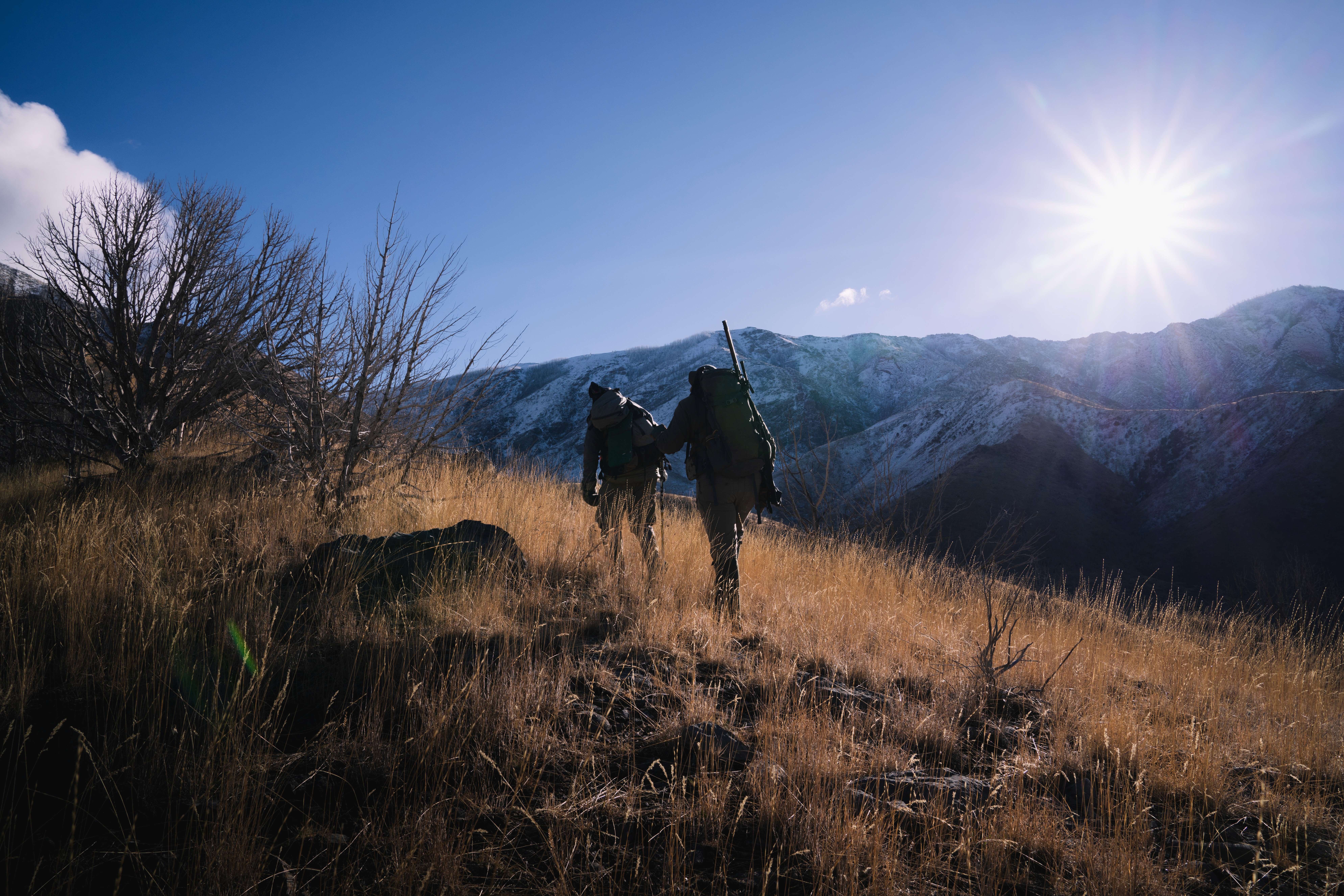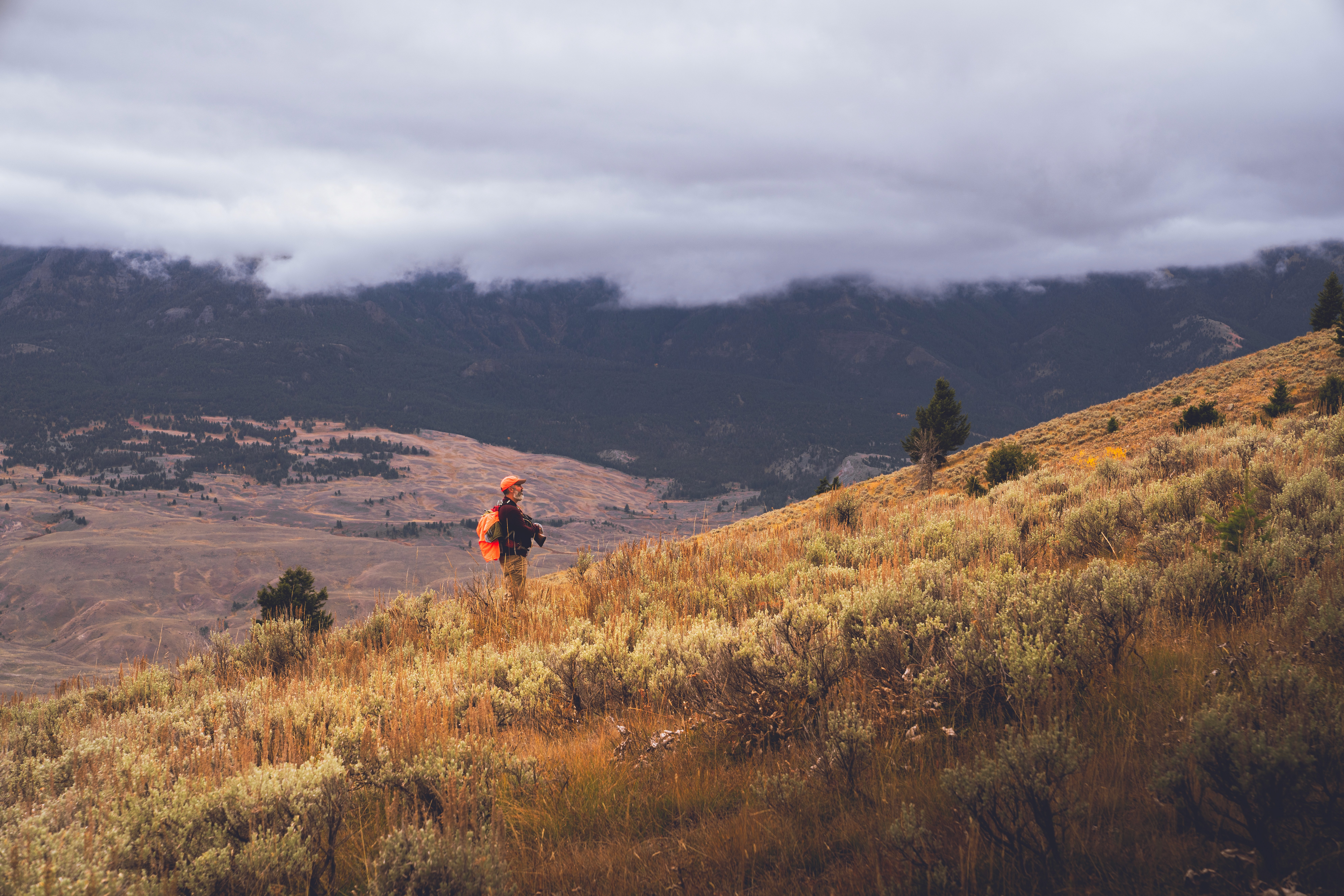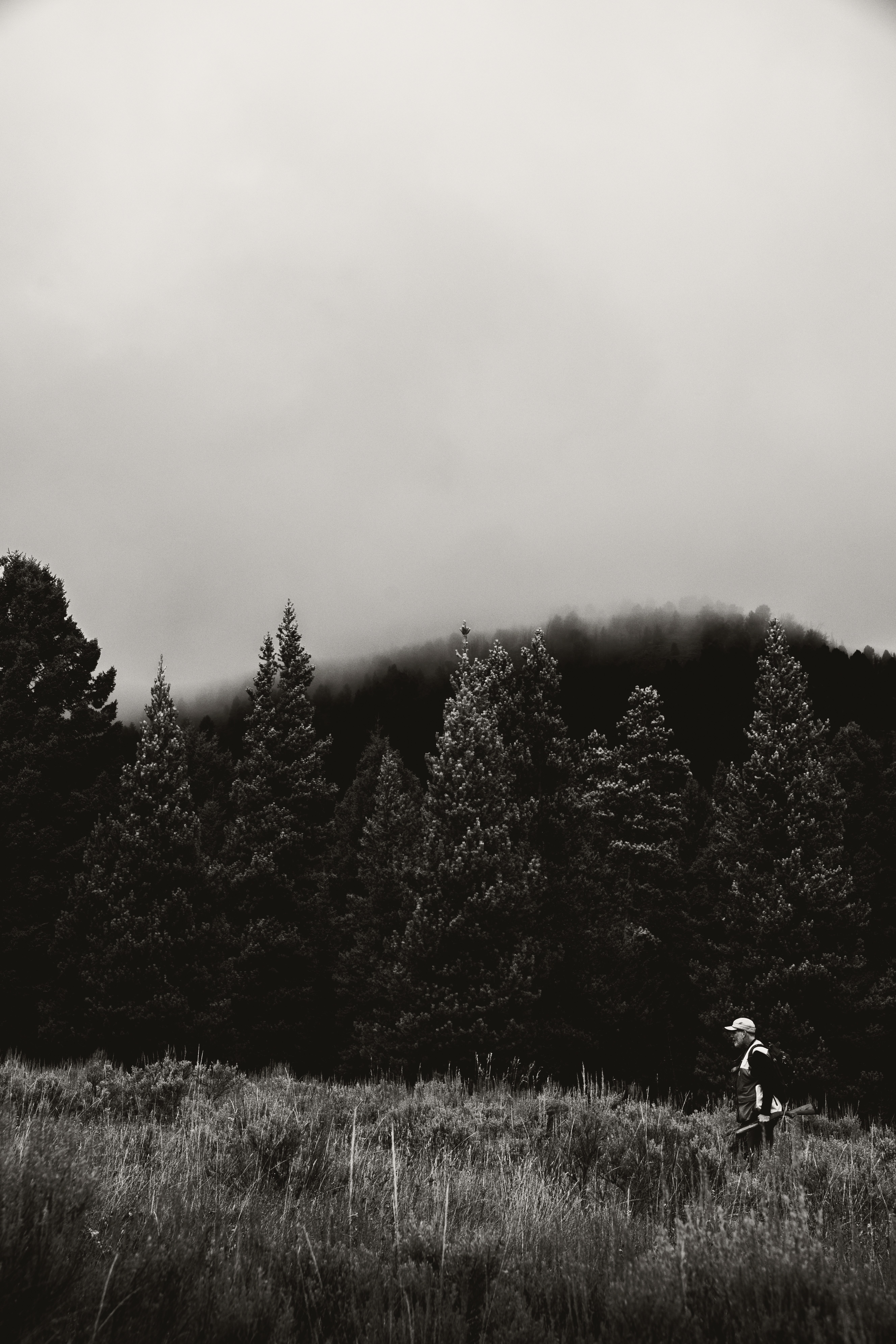



PackMule
Pre-Season Hunting Prep: How to Schedule Training, Shooting, and Scouting

Big Game tag: $800
Gas: $700
Lodging: $1,000
Food: $300
Gear upgrades: $500
E-scouting software membership $100
New ammo/arrows: $200
Incidentals: $500
Missing an opportunity because you weren’t prepared: Priceless.
The thought stings doesn’t it? You spent all that money and all that time away from home only to blow it because you didn’t prepare well enough.
It’s funny how quickly our mind tries to protect us with rationalizations after a missed opportunity. First comes disappointment. Then frustration and anger. After that it’s sadness and the full realization of what just happened. Then anger with ourselves. And that’s when the rationalizations come.
Man, that hike got me. I just couldn’t get my breathing under control again.
I wish I would have had more time to practice shooting this summer. I wouldn’t have missed that shot.
We’d have been in a better spot had I more time to e-scout before we got here.
We say these things to ourselves. We utter them to our buddies. But consciously or unconsciously we know we’re full of shit.
We just didn’t do what we needed to do to prepare.
It’s a big problem that’s easy to solve. All it takes is a little bit of scheduling and your commitment to action.
Let’s walk through a step-by-step plan for creating your pre-season hunt prep schedule.
But first, we’ll get the good word from a hunting guidel. I asked him the most common way that clients show up unprepare for a hunt.
A Hunting Guide Weighs in on Pre-season Prep
“Asking how hunters are unprepared opens a flood gate of topics about guiding wilderness area hunts, but number one is arriving with a level of physical fitness that hiners our decision making and prevents us from carrying out the optimal plan.”
Austin Finnell is wilderness hunting guide, fly fishing guide, and ski patroler in Summit County, Colorado. He’s guided folks through all kinds of gnarly shit after elk, rowed the river to put fly fishers on trout, and kept people safe on the mountain during the winter. To him, physical prep seems the most lacking in clients that show up unprepared. And he believes it’s because the important stuff gets overlooked.
“I believe that guys do a great job on other types of training, but it’s easiest to overlook the most boring, often uncomfortable, training of long times under load – whether it’s hiking, stairs, or incline training.”
And that lack of prep brings out the excuses.
“I would sometimes hear comments such as, ‘You can’t train for this type of terrain where we live,” which I believe is an over-simplification. I think they say it because they realize within the first hours of the first day that their fitness will hinder them for the next five days.”
So, what kind of physical prep gets the job done?
“Our most successful hunts were often the ones that we got to where we needed to go, even if we had to cover ground incredibly slowly. If we got there we would increase our odds. This terrain and objective requires all day and all week capability that is a locomotive engine type of fitness where we can just put one step in front of the other, all day if necessary.”
Austin has seen another thing that kills hunters’ chances – trading money spent on gear for time and effort spent on preparation.
“The bottom line is the hunt will be uncomfortable and exhausting no matter how much money is spent on gear. I woul see guys spending two to three times more than the entire guided hunt on gear, and then never wear that gear outside of their house! Clients have called while standing in a store within 12 hours of a hunt asking if they need to buy a $700 Sitka jacket for the hunt.”
And while gear can help, it’s not necessary for success. Preparation is.
“One of the best hunters I’ve ever had hunted the entire week in jeans and cotton long underwear despite moving around 10 miles per day up and down over 12,000 feet of elevation. He had a bow that was over 15 years old, but it was well-maintained.”
You might not be hiring a guide this year, but the principles are the same.
Show up ready by building your aerobic system, getting efficient under load by rucking and doing carries, and practicing with the gear you have.
Here are five steps to help you do that.
5 Steps for Creating Your Pre-season Hunt Prep Schedule
1. Needs Assessment: We like to do things that we’re good at. It makes us feel safe and all warm and cozy inside. So, we hyperfocus on our strengths while ignoring our weaknesses. Now, I’m not saying to totally ignore your strengths and not maintain them. But I am saying you need to take an honest look at your current needs and set a plan for bringing up your limiting factors.
One of the easiest ways to do this is to consider where you failed in the past. If building your shooting position took too much time and cost you a shot opportunity, then you need to get your keister off of the shooting bench and practice building, and shooting from, field positions. If your cardio was good because you ran all last summer, but your body broke down under load because you didn’t strength train, guess what you need to do?
Lay out the prep elements: shooting, scouting, gear prep, fitness, mental prep. Consider them all through the lens of last year’s hunts and your current situation. Where are you weak and where are you strong?
2. Rank Your Needs: List out your needs in order of priority.
Now, you’ll spend time on each prep element. Some things get about even amount of time. Some will get more time just by the nature of what they require, or because they are a glaring weakness. For example, all aspects of fitness take time. You can’t spend 15-minutes per day and expect your body to be ready for the mountains. Other things only require 15 minutes per day, but you can’t skip those 15 minutes. Even if your fitness isn’t one of your weaknesses, there’s no getting around spending a good bit of time on it. (This is where you narrow down your fitness needs to make sure you’re doing the right things.)
But as you do step number three, you’ll use these rankings to fill in your schedule.
3. Do a Time Evaluation and Mark Time Blocks: While we all love hunting, we have to admit that for most of us it’s not the number one priority. And there are other aspects of life that compete for our attention. Take out a calendar and mark out all of your responsibilities that you can’t budge on. Block off work, time with family, vacations, etc. This gives you a realistic view of how much time you have to spend on hunting prep this summer.
Once you have your non-negotiable time blocks, look at your needs assessment. Fill in the black spaces with the prep elements, starting with the biggest priorities. For example, maybe you have time after dinner and before getting the kids to bed that you can spend 15 minutes on e-scouting. Maybe you see that you have an hour time block every morning at 6am to train. However, it breaks down, fill in your time blocks so you have each aspect of your prep dialed.
Now, keep in mind that some prep elements might not be an every week event. For example, maybe you’re prepping for a big upland hunt but you don’t have the opportunity to shoot clays every week. That’s okay. Build it in to your schedule as it is.
4. Focus on Opportunities Rather Than Obstacles: I can only get to the rifle range about once per month, and it’s illegal where I live for me to shoot my bow in the yard. It’s easy to look at these circumstances and just throw your hands up. But the truth is there’s always something we can do. And even a little amount of time spent on prep is impactful if you consistently spend that time.
For example, even though I can only get to the range once per month, I dry fire practice throughout the week. I build shooting positions, go through my shot process, then break the position and build it again using drills I’ve learned from my friends Caylen and Phillip at Modern Day Sniper. Then, when I get to the range my process is dialed in and I can focus on wind calls, recoil management, etc.
And since I can’t legally shoot my bow in my neighborhood, I shoot it in my garage. I’m guessing it’s probably also illegal, but my garage door hides me from Johnny Law. I can get a solid 10- to 15-minute practice session in working on my shot process, nailing my achor points, etc. Then, when I’m at a range I can work on shooting longer distances. All that practice accumulates to improve my shooting as I launch arrows down range.
Instead of thinking, “Oh, that’s not enough time,” or, “It won’t help because it’s not at distance,” find the opportunities you have and use them. There is no time block too small if you consistently use it. (The caveat is fitness. You can’t spend 10 minutes per day training and expect to get anywhere.)
5. Act: Once you have it all laid out, all that’s left is to do it. Make consistency your focus and use the time you have to prepare as best you can.
You have the time. You have the resource. Use the list to build the pre-season prep schedule that works for you. Then be ruthlessly consistent.
To make sure your pre-season prep is really dialed, click the image below to download our free guide 5 Biggest Backcountry Training Mistakes: And How to Avoid Them.
Recent posts
Related Articles

Mountain Hunting
Dec 15, 2025
How to Test Your Uphill Muscular Endurance for Mountain Hunting
Mountain hunting is a lot of things. It’s an adventure and for many hunters it’s a rite of passage. It’s a challenge of skill, a test of will, and, oftentimes, an experience that at least borders the spiritual. It is also an endeavor that requires a huge amount of muscular endurance. It’s tough to build your uphill muscular endurance to the right levels without knowing where you currently stand and what kind of training will move the needle for you. So, let’s learn you up on how to test your uphill muscle endurance for mountain hunting.

Mountain Hunting
Dec 15, 2025
How to Test Your Uphill Muscular Endurance for Mountain Hunting
Mountain hunting is a lot of things. It’s an adventure and for many hunters it’s a rite of passage. It’s a challenge of skill, a test of will, and, oftentimes, an experience that at least borders the spiritual. It is also an endeavor that requires a huge amount of muscular endurance. It’s tough to build your uphill muscular endurance to the right levels without knowing where you currently stand and what kind of training will move the needle for you. So, let’s learn you up on how to test your uphill muscle endurance for mountain hunting.

Mountain Hunting
Dec 15, 2025
How to Test Your Uphill Muscular Endurance for Mountain Hunting
Mountain hunting is a lot of things. It’s an adventure and for many hunters it’s a rite of passage. It’s a challenge of skill, a test of will, and, oftentimes, an experience that at least borders the spiritual. It is also an endeavor that requires a huge amount of muscular endurance. It’s tough to build your uphill muscular endurance to the right levels without knowing where you currently stand and what kind of training will move the needle for you. So, let’s learn you up on how to test your uphill muscle endurance for mountain hunting.

Mountain Hunting
Dec 10, 2025
The Toughest Hunt on Earth: Himalayan Blue Sheep Expedition
“It’s truly an expedition. I’d even say it’s the purest hunt on earth.” This wasn’t the first time Trey Sperring and I had talked about hunting blue sheep in Nepal. It wasn’t even the second. The first was during our mutual friend and client, John Mark Prewitt’s, California Big Horn hunt in November 2024. Since then, we’ve texted about it, mentioned it on phone calls, and even discussed it during episode 74 of the Packmule Podcast. It is a conversational thread running through our friendship.

Mountain Hunting
Dec 10, 2025
The Toughest Hunt on Earth: Himalayan Blue Sheep Expedition
“It’s truly an expedition. I’d even say it’s the purest hunt on earth.” This wasn’t the first time Trey Sperring and I had talked about hunting blue sheep in Nepal. It wasn’t even the second. The first was during our mutual friend and client, John Mark Prewitt’s, California Big Horn hunt in November 2024. Since then, we’ve texted about it, mentioned it on phone calls, and even discussed it during episode 74 of the Packmule Podcast. It is a conversational thread running through our friendship.

Mountain Hunting
Dec 10, 2025
The Toughest Hunt on Earth: Himalayan Blue Sheep Expedition
“It’s truly an expedition. I’d even say it’s the purest hunt on earth.” This wasn’t the first time Trey Sperring and I had talked about hunting blue sheep in Nepal. It wasn’t even the second. The first was during our mutual friend and client, John Mark Prewitt’s, California Big Horn hunt in November 2024. Since then, we’ve texted about it, mentioned it on phone calls, and even discussed it during episode 74 of the Packmule Podcast. It is a conversational thread running through our friendship.

Mindset & Motivation
Dec 7, 2025
Review, Recalibrate, Re-Launch: Build Your Hunting Fitness Plan for 2026
Most folks aren’t good at reflecting. Holding the mirror up to yourself and to what’s happened in the recent past is hard work — and it can be damn uncomfortable. But it’s necessary for growth and progress. If you read those first few sentences and thought, “Hell, that’s me.” And you also had the thought that you would like to get better at moving yourself forward, just know that it makes sense that you aren’t great at reflecting. You likely weren’t ever taught how to do it, or if you were, you weren’t given a good system for taking what you’ve learned and molding it into a productive plan for moving yourself forward.

Mindset & Motivation
Dec 7, 2025
Review, Recalibrate, Re-Launch: Build Your Hunting Fitness Plan for 2026
Most folks aren’t good at reflecting. Holding the mirror up to yourself and to what’s happened in the recent past is hard work — and it can be damn uncomfortable. But it’s necessary for growth and progress. If you read those first few sentences and thought, “Hell, that’s me.” And you also had the thought that you would like to get better at moving yourself forward, just know that it makes sense that you aren’t great at reflecting. You likely weren’t ever taught how to do it, or if you were, you weren’t given a good system for taking what you’ve learned and molding it into a productive plan for moving yourself forward.

Mindset & Motivation
Dec 7, 2025
Review, Recalibrate, Re-Launch: Build Your Hunting Fitness Plan for 2026
Most folks aren’t good at reflecting. Holding the mirror up to yourself and to what’s happened in the recent past is hard work — and it can be damn uncomfortable. But it’s necessary for growth and progress. If you read those first few sentences and thought, “Hell, that’s me.” And you also had the thought that you would like to get better at moving yourself forward, just know that it makes sense that you aren’t great at reflecting. You likely weren’t ever taught how to do it, or if you were, you weren’t given a good system for taking what you’ve learned and molding it into a productive plan for moving yourself forward.

Mountain Hunting
Dec 15, 2025
How to Test Your Uphill Muscular Endurance for Mountain Hunting
Mountain hunting is a lot of things. It’s an adventure and for many hunters it’s a rite of passage. It’s a challenge of skill, a test of will, and, oftentimes, an experience that at least borders the spiritual. It is also an endeavor that requires a huge amount of muscular endurance. It’s tough to build your uphill muscular endurance to the right levels without knowing where you currently stand and what kind of training will move the needle for you. So, let’s learn you up on how to test your uphill muscle endurance for mountain hunting.

Mountain Hunting
Dec 10, 2025
The Toughest Hunt on Earth: Himalayan Blue Sheep Expedition
“It’s truly an expedition. I’d even say it’s the purest hunt on earth.” This wasn’t the first time Trey Sperring and I had talked about hunting blue sheep in Nepal. It wasn’t even the second. The first was during our mutual friend and client, John Mark Prewitt’s, California Big Horn hunt in November 2024. Since then, we’ve texted about it, mentioned it on phone calls, and even discussed it during episode 74 of the Packmule Podcast. It is a conversational thread running through our friendship.


